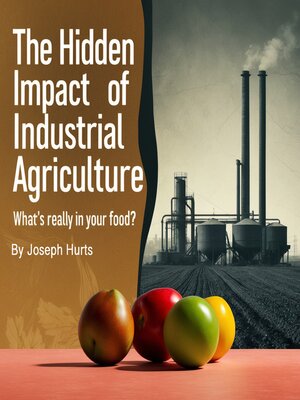The Hidden Impact of Industrial Agriculture
audiobook (Unabridged) ∣ What's Really in Your Food?
By Joseph Hurts

Sign up to save your library
With an OverDrive account, you can save your favorite libraries for at-a-glance information about availability. Find out more about OverDrive accounts.
Find this title in Libby, the library reading app by OverDrive.



Search for a digital library with this title
Title found at these libraries:
| Library Name | Distance |
|---|---|
| Loading... |
This audiobook is narrated by a digital voice.
Modern industrial agriculture has transformed food production into a complex chemical process that bears little resemblance to traditional farming, creating products that may look like food but contain an unprecedented array of synthetic chemicals, pharmaceutical residues, and engineered compounds that were never part of the human diet throughout our evolutionary history. The transformation of agriculture from a biological process into an industrial manufacturing system has fundamentally altered the composition of the food supply while hiding these changes behind familiar packaging and marketing that obscures the reality of what people are actually consuming.
Pesticide residues in conventionally grown produce represent one of the most widespread forms of chemical contamination in the modern food supply, with government testing consistently finding detectable levels of multiple pesticides in fruits and vegetables sold in supermarkets. These chemicals are designed to kill insects, weeds, and fungi by disrupting biological processes that are often similar to those found in human physiology, raising concerns about their effects on human health even at levels considered safe by regulatory agencies.
The concept of pesticide safety based on individual chemical testing ignores the reality that people are exposed to combinations of multiple pesticides simultaneously, creating potential synergistic effects that have not been adequately studied or regulated. The "cocktail effect" of pesticide combinations may produce health impacts that are greater than the sum of their individual effects, while regulatory systems continue to evaluate chemicals in isolation rather than considering the complex mixtures that characterize real-world exposure.







